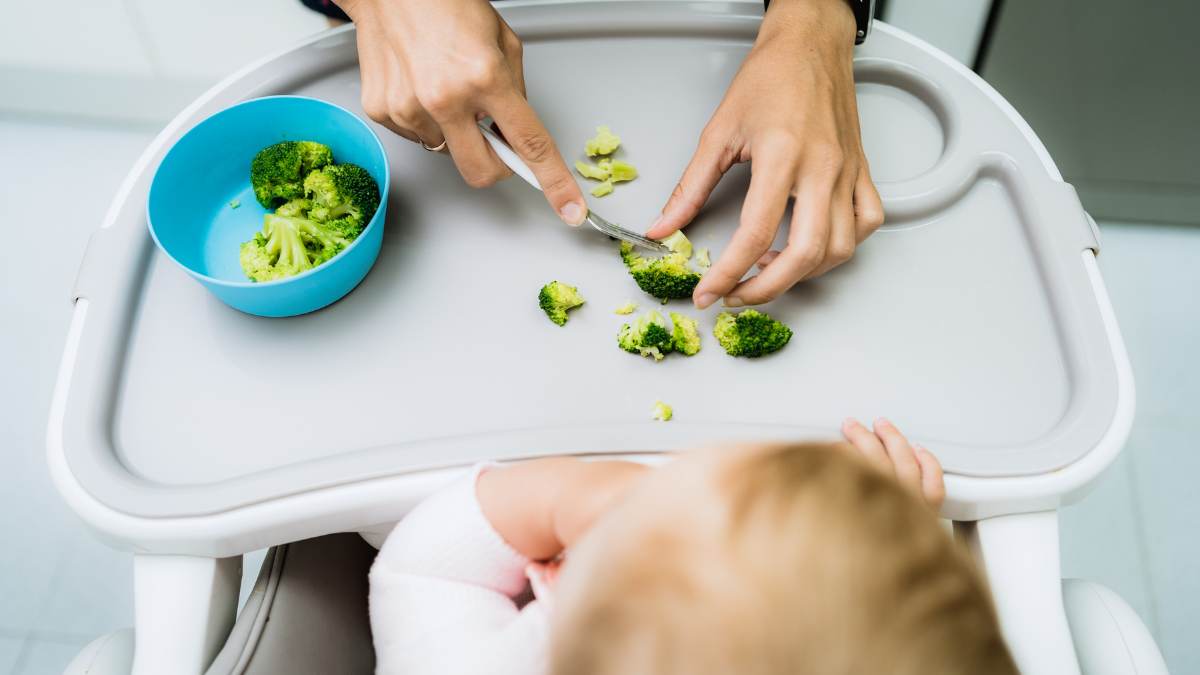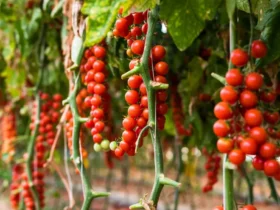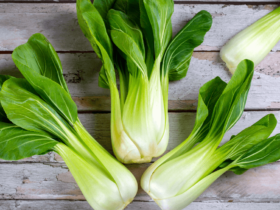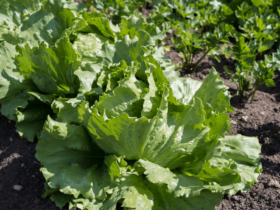Broccoli goes through four growth stages: seedling, vegetative, flowering, and harvesting. Broccoli, a popular vegetable, undergoes four distinct stages as it grows: seedling, vegetative, flowering, and harvesting.
Understanding these different stages can help gardeners effectively cultivate and care for their broccoli crop. From its initial sprouting as a seedling to the development of its florets during the flowering stage, broccoli requires specific conditions, such as soil quality, sunlight, and watering, to thrive.
Each stage brings its own set of challenges and requirements, and proper management is essential to ensure a successful harvest. Whether you are a home gardener or a commercial farmer, familiarizing yourself with the growing stages of broccoli is crucial to grow a robust and nutritious crop.
2. Understanding The Basics Of Broccoli
Broccoli is a nutritious and versatile vegetable that belongs to the cruciferous family, alongside cauliflower, kale, and Brussels sprouts. Packed with essential vitamins and minerals, this green vegetable is loved for its unique flavor and numerous health benefits. To successfully grow broccoli in your garden, it’s important to have a good understanding of the basics. In this section, we will explore the definition and varieties of broccoli, as well as its incredible nutritional benefits.
2.1 What Is Broccoli?
Broccoli, scientifically known as Brassica oleracea, is a cool-season plant native to the Mediterranean region. It is characterized by its compact green florets, which form a tight head at the top of the plant. These florets are packed with nutritious compounds and are surrounded by thick, dark green leaves.
2.2 Varieties Of Broccoli
Broccoli comes in different varieties, each with its unique characteristics. The most common types of broccoli are:
- Calabrese Broccoli: This is the most popular variety of broccoli known for its large, dense heads and mild taste.
- Broccolini: Also referred to as “baby broccoli,” this variety has smaller florets and long, thin stalks.
- Romanesco Broccoli: Recognized by its striking appearance, Romanesco broccoli features bright green florets arranged in a captivating fractal pattern.
Growing different varieties of broccoli can add variety to your meals and enhance the visual appeal of your garden.
2.3 Nutritional Benefits Of Broccoli
Broccoli is a nutritional powerhouse, offering a wide range of health benefits. Here are some of the important nutrients found in this cruciferous vegetable:
| Nutrient | Benefits |
| Vitamin C | Boosts the immune system and helps in collagen production for healthy skin. |
| Vitamin K | Supports bone health and helps with blood clotting. |
| Fiber | Promotes a healthy digestive system and aids in weight management. |
| Antioxidants | Protects against cell damage and reduces the risk of chronic diseases like cancer. |
| Iron | Contributes to the production of red blood cells and carries oxygen throughout the body. |
These are just a few of the many nutrients found in broccoli, making it an excellent addition to a well-balanced diet.

3. Preparing The Soil For Broccoli Cultivation
Before you start growing the nutritious and delicious vegetable, broccoli, it is crucial to prepare the soil properly. This step sets the foundation for successful broccoli cultivation. In this section, we will delve into the various aspects of preparing the soil for your broccoli plants, including choosing the right location, soil preparation techniques, and implementing organic amendments.
3.1 Choosing The Right Location
When it comes to growing broccoli, selecting the right location for your plants can make a significant difference in their overall health and productivity. Here are a few factors to consider:
- Sunlight Exposure: Broccoli thrives in full sun, so choose a location that receives at least 6-8 hours of direct sunlight each day.
- Temperature: Optimal temperatures for broccoli range between 45°F and 75°F. Ensure that the location you choose can provide these ideal temperature conditions.
- Drainage: Good drainage is crucial for broccoli plants, as they prefer moist but not waterlogged soil. Avoid areas with poor drainage to prevent waterlogged roots.
3.2 Soil Preparation Techniques
Now that you’ve identified a suitable location, it’s time to prepare the soil for your broccoli plants. Following these soil preparation techniques will contribute to an ideal growing environment:
- Clear the Area: Begin by removing any existing vegetation, such as weeds or grass, from the area where you plan to grow broccoli. This ensures that the plants won’t have to compete for resources.
- Loosen the Soil: Broccoli plants require loose soil for root development. Gently loosen the soil using a garden fork or tiller to a depth of approximately 8-10 inches.
- Remove Debris: Take the time to remove any rocks, sticks, or other debris that may hinder root growth and make it difficult to plant broccoli seedlings.
- Level the Soil: After removing debris, level the soil using a rake to provide an even surface for planting. This helps facilitate uniform water distribution and prevents water pooling.
3.3 Implementing Organic Amendments
Organic amendments are valuable additions to enhance the soil’s fertility and provide essential nutrients to your broccoli plants. Here are a few organic amendments to consider implementing:
| Amendment | Benefits |
| Compost | Improves soil structure, enhances moisture retention, and supplies organic matter. |
| Manure | Boosts nutrient levels, increases microbial activity, and promotes healthy plant growth. |
| Bone Meal | Supplies phosphorus, which is vital for strong root development and overall plant vigor. |
When applying these amendments, follow the recommended application rates and guidelines for each specific amendment type.

4. Growing Broccoli From Seed
One of the most rewarding ways to grow broccoli is from seed. By starting with quality seeds and following the proper steps, you can ensure a successful harvest of fresh, nutritious broccoli. In this section, we will guide you through the process of growing broccoli from seed, from selecting the right seeds to transplanting the seedlings into your garden.
4.1 Selecting Quality Seeds
When it comes to growing broccoli from seed, selecting high-quality seeds is essential. Good seed selection can greatly increase the chances of successful germination and healthy plant growth. Here are some key factors to consider when choosing your broccoli seeds:
- Look for reputable seed suppliers that offer a wide variety of broccoli seeds.
- Choose seeds that are labeled as “organic” or “non-GMO” to ensure you are starting with healthy, chemical-free plants.
- Check the seed packet for the variety’s average maturity date, as this will help you plan your planting and harvesting timeline.
- Consider the climate and growing conditions in your area. Some broccoli varieties are better suited for cool weather, while others are more heat-tolerant.
4.2 Starting Seeds Indoors
Starting broccoli seeds indoors is a common practice to get a head start on the growing season. Follow these steps to successfully start your broccoli seeds indoors:
- Fill seed trays or containers with a well-draining seed starting mix.
- Moisten the soil lightly and create small depressions in the soil for each seed.
- Place a seed in each depression and cover it with a thin layer of the seed starting mix.
- Water gently and place the seed trays in a warm and well-lit area, such as a sunny windowsill or under grow lights.
- Keep the soil consistently moist but not overly saturated.
- Once the seedlings have developed two to three true leaves, they are ready to be transplanted into individual pots or larger containers.
4.3 Transplanting Seedlings To The Garden
Transplanting your broccoli seedlings into the garden requires careful handling to ensure their successful growth. Follow these steps to transplant your seedlings:
- Choose a sunny spot in your garden with well-draining soil.
- Prepare the soil by adding compost or organic matter to improve its fertility.
- Dig holes in the soil that are slightly larger than the root ball of each seedling.
- Carefully remove the seedlings from their pots, handling them by the leaves or root ball to avoid damaging the delicate stems.
- Place each seedling in a hole and gently backfill with soil, making sure the soil is firmly packed around the roots.
- Water the transplanted seedlings thoroughly, providing enough moisture to settle the soil and encourage root establishment.
By following these steps, you can successfully grow broccoli from seed and enjoy a bountiful harvest of this nutritious and versatile vegetable. Whether you are a seasoned gardener or a beginner, growing broccoli from seed is a rewarding experience that allows you to savor the taste of fresh, homegrown produce.

5. Caring For Broccoli Plants
Once you’ve successfully planted your broccoli, it’s important to provide proper care to ensure healthy growth and a bountiful harvest. Caring for broccoli plants involves meeting their specific needs for water, protecting them from pests and diseases, and using mulching techniques to maintain the soil’s moisture level. Let’s take a closer look at each aspect of caring for broccoli plants.
5.1 Watering Requirements
Providing the correct amount of water is crucial for the growth of your broccoli plants. Broccoli requires consistent moisture to thrive, so it’s important to keep the soil evenly moist throughout the growing season. Aim to give your broccoli plants about 1 to 1.5 inches of water per week, either through rainfall or supplemental irrigation.
When watering, make sure to water deeply at the base of the plants, avoiding getting the leaves wet. This helps prevent potential diseases caused by excess moisture on the foliage. Consider using a soaker hose or drip irrigation system to deliver water directly to the root zone, minimizing evaporation and ensuring efficient water usage.
5.2 Mulching Techniques
Mulching is an effective technique to maintain soil moisture, suppress weed growth, and regulate soil temperature for your broccoli plants. Applying a layer of organic mulch around the base of the plants helps conserve water and reduces the need for frequent watering.
A suitable mulching material for broccoli plants can be straw, wood chips, or dried grass clippings. Spread a 2-3 inch layer of mulch around the plants, making sure to leave a small space around the stem to prevent rotting. This layer will insulate the soil, preventing temperature fluctuations and reducing weed competition.
5.3 Controlling Pests And Diseases
Protecting your broccoli plants from pests and diseases is essential to ensure a successful harvest. Common pests that can threaten your broccoli include aphids, caterpillars, and flea beetles. Implementing preventive measures and early detection can help control these pests effectively.
Inspect your plants regularly for any signs of infestation. If you notice pest activity, consider using organic pest control methods such as introducing beneficial insects like ladybugs or applying insecticidal soap. Additionally, practicing crop rotation and removing any infected plant debris can help prevent the spread of diseases.
| Pest | Control Method |
| Aphids | Introduce ladybugs, spray with insecticidal soap |
| Caterpillars | Handpick caterpillars, use floating row covers |
| Flea Beetles | Plant companion plants like radishes, apply sticky traps |
By following these care guidelines, you can ensure your broccoli plants remain healthy and productive throughout their growing stages. Remember to monitor their water requirements, use mulching techniques to maintain soil moisture, and stay vigilant in controlling pests and diseases. With the proper care, you’ll soon be enjoying delicious homegrown broccoli straight from your garden!

6. Harvesting And Storing Broccoli
Once you have successfully grown your broccoli plants and they have gone through their various stages of growth, it is time to enjoy the fruits of your labor. Harvesting broccoli at the right time ensures that you get the most flavorful and nutritious heads. In this section, we will discuss when to harvest broccoli, different harvesting techniques, and proper storage methods to keep your broccoli fresh.
6.1 Knowing When To Harvest
Harvesting broccoli at the right time is crucial for a tasty and satisfying yield. To determine if your broccoli is ready for harvest, look for the following signs:
- The head of the broccoli should be firm and compact, with tightly closed florets.
- The florets should be dark green to bluish-green in color. Avoid harvesting if the head turns yellow.
- The buds in the head should be small and tight, without any signs of flowering.
- The main stalk should be thick and sturdy.
6.2 Harvesting Techniques
When it comes to harvesting broccoli, there are a few techniques you can use:
- Terminal Head Harvesting: This is the most common method where you cut the central head of the broccoli using a sharp knife. Cut the stem about 6 inches below the head to encourage the growth of side shoots.
- Side Shoot Harvesting: If you have allowed your plants to mature further after the central head is harvested, you can harvest the smaller side shoots that develop. Cut them off at the same angle as the main head.
6.3 Proper Storage Methods
Properly storing your harvested broccoli will help maintain its freshness and extend its shelf life. Follow these storage methods:
| Storage Method | Description |
| Refrigerator | – Wrap the broccoli in a damp paper towel and place it in a perforated plastic bag. |
| Blanching and Freezing | – Blanch the broccoli in boiling water for a few minutes, then cool it in an ice bath before freezing. |
| Preserving | – Alternatively, you can preserve broccoli by pickling or canning it. |
By knowing when to harvest, using the right techniques, and storing your broccoli properly, you can enjoy the freshness and nutritional benefits of this delicious vegetable for an extended period. So go ahead and make the most of your homegrown broccoli!

7. Common Challenges In Broccoli Cultivation
While growing broccoli can be a rewarding experience, it’s important to be aware of the common challenges that can arise during its cultivation. By understanding these challenges and implementing the appropriate solutions, you can ensure a successful broccoli harvest. Here are the three common challenges you may encounter, along with tips on how to overcome them:
7.1 Dealing With Bolting
Bolting refers to the premature flowering and seed production of broccoli plants, which can interfere with the development of the edible florets. This can be caused by high temperatures or other environmental stressors. To prevent bolting, follow these steps:
- Choose appropriate broccoli varieties that are known to be more resistant to bolting.
- Provide consistent moisture to the plants by watering them deeply and regularly.
- Avoid planting broccoli in areas where it receives direct sunlight for extended periods, especially during the hotter parts of the day.
- Harvest the main broccoli heads promptly to discourage the plants from diverting their energy towards flowering.
- If bolting does occur, remove the affected plants to allow the remaining broccoli plants to continue growing.
7.2 Managing Nutrient Deficiencies
Nutrient deficiencies can stunt the growth of broccoli plants and affect their overall health. Here are some tips for managing nutrient deficiencies:
- Conduct a soil test before planting and amend the soil with organic matter and appropriate fertilizers to ensure it contains all the necessary nutrients.
- Monitor the plants for signs of nutrient deficiency, such as yellowing leaves or stunted growth.
- If a specific nutrient deficiency is identified, apply a targeted fertilizer or foliar spray to provide the necessary nutrients.
- Regularly provide balanced fertilization throughout the growing season to maintain optimal plant health.
7.3 Preventing Common Diseases
Broccoli is susceptible to various diseases that can reduce crop productivity and quality. To prevent the occurrence and spread of common diseases, implement the following practices:
- Practice crop rotation by avoiding planting broccoli or other brassicas in the same location for consecutive seasons.
- Ensure good air circulation around the plants by spacing them appropriately.
- Remove and destroy any infected plant debris to prevent the spread of diseases.
- Apply appropriate organic or chemical treatments as recommended for specific diseases.
- Monitor the plants regularly for signs of disease and take prompt action to prevent further damage.
By addressing these common challenges in broccoli cultivation, you can maximize your chances of producing healthy and abundant broccoli harvests. Implementing these preventive measures will help you overcome potential obstacles and enjoy a successful growing experience.
Frequently Asked Questions For Growing Stages Of Broccoli
How Long Does It Take For Broccoli To Grow?
Broccoli typically takes 70 to 100 days to fully mature and be ready for harvest.
What Are The Different Stages Of Broccoli Growth?
Broccoli goes through four main stages of growth: seed germination, seedling establishment, vegetative growth, and flowering and head formation.
How Can I Promote The Growth Of My Broccoli Plants?
To encourage healthy broccoli growth, provide adequate sunlight, well-drained soil, regular watering, proper spacing, and balanced fertilizer application.
Conclusion
To summarize, understanding the growing stages of broccoli is essential for successful cultivation. From seed sowing to transplanting, providing the right conditions during each stage is crucial for healthy growth. By following best practices such as regular watering, adequate sunlight, and timely pest control, you can enjoy a bountiful harvest.
Remember, investing time and effort in nurturing your broccoli plants will yield rewarding results in the long run. Happy growing.




